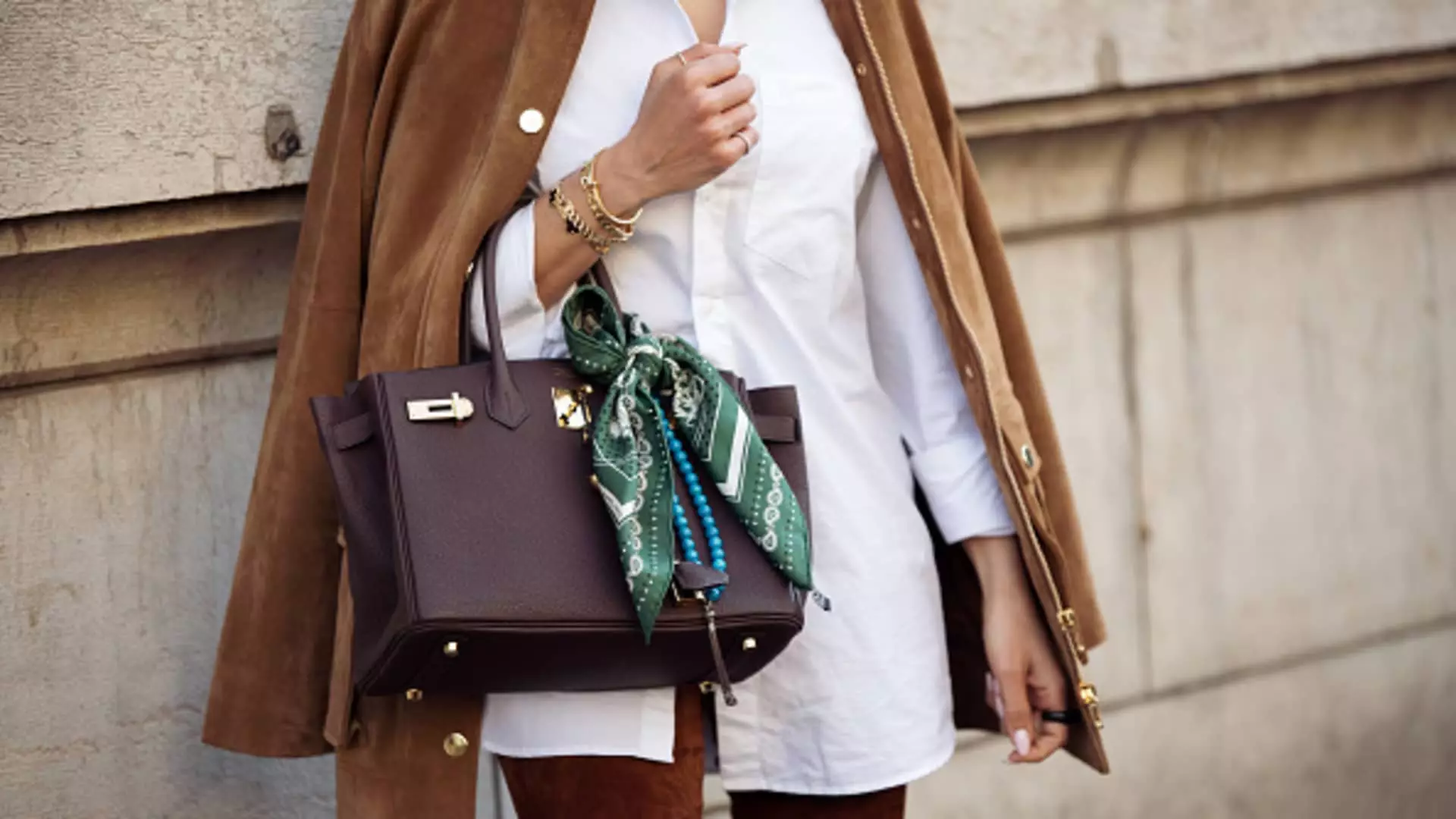In an era of volatile political choices and economic shifts, the luxury market finds itself at a crossroads, with brands like Hermès now caught in the fray. As the company prepares to raise its U.S. prices starting May 1 to counteract President Donald Trump’s tariffs, it raises an intriguing question about the sustainability of luxury in a politically charged environment. This plan to increase prices by 10% reflects not just a response to immediate financial realities, but also a gamble on the resilience of affluent American consumers. While the affluent may still enjoy the luxury that brands like Hermès offer, what does it signify when these price increases are baked into the essence of the shopping experience itself?
The Shifting Landscape of Luxury Spending
As Hermès banks on its rising market capitalization, investor pressure intertwines with its brand identity. The company’s recent ascension to become the world’s largest luxury firm, surpassing industry juggernaut LVMH, illustrates just how much the game has changed. With flashy Birkin and Kelly bags and iconic scarves, Hermès undeniably holds a cherished place in the luxury spectrum. Yet, this pricing strategy sharply bifurcates the market—will price sensitivity diminish among their elite consumers, or will a backlash arise from those who find themselves jaded by continuous cost increases?
The reality is that Hermès’ wealth is largely drawn from its North American consumer base, contributing nearly 17% to its overall sales revenue. However, this dependence could spell trouble if economic growth decelerates further. Analysts have stressed that while luxury brands can frequently transfer increased costs to consumers, a wider economic slowdown could wrestle the purchasing power from even the most affluent clientele. It appears that luxury, once a safe haven, must now contend with the specter of economic instability and decreased consumer confidence.
A Tale of Two Giants: Hermès vs. LVMH
The standoff between Hermès and LVMH serves as a microcosm of larger tensions impacting the global luxury market. Hermès might currently bask in the limelight, yet its annual revenue dwarfs in comparison to LVMH, which continues to dominate with an expansive portfolio encompassing Louis Vuitton, Dior, Tiffany, and more. Intriguingly, despite similar market capitalizations momentarily, LVMH’s recent sales dip demonstrates the unwieldy nature of luxury commerce. This rise and fall suggest that even established giants are vulnerable to the nuances of market economics, which raises the question: Is growth a true indicator of stability in the luxury sector?
The headwinds facing LVMH, including a reported decline in its fashion and leather goods division, could foreshadow the turbulence that resonates throughout the luxury economy. As Hermès seeks to extend its upward trajectory amid substantial price hikes, it becomes increasingly vital to question how sustainable such luxury consumption can be in the face of broader economic challenges.
Turning Point: Navigating Consumer Sentiment
Placing the responsibility of price increases on consumers may reflect a strategic miscalculation. Sure, Hermès can implement these changes due to its elite status, but alienating a consumer base can yield significant consequences. Recent trends suggest consumers are more discerning than ever. They actively scrutinize their spending habits, and any creeping bitterness stemming from price hikes could trigger an unexpected downturn. The narrative of luxury as an essential treat must evolve into an argument of necessity if brands like Hermès wish to remain relevant.
Ultimately, the choice to raise prices sets a precarious precedent. It forces us to question the underlying values that drive luxury consumption. Are consumers simply purchasing a brand, or does the value lie in the exclusive experience and social cachet associated with them? As Hermès navigates this precarious landscape, one can only hope that it remains cognizant of the fine line it walks between exclusivity and accessibility.
Implications for the Broader Luxury Market
What happens next will resonate far beyond Hermès’ bottom line. The ripple effect wherein other luxury brands may adopt similar strategies could reshape consumer perceptions of price and value altogether. If every luxury house opts to absorb or shift increased tariffs onto consumers, a dangerous precedent may emerge, leading to saturation in the market. Consumer trust will hang in the balance as brands risk losing their luster in pursuit of rapid financial gains.
In a world of evolving political landscapes and economic uncertainties, the luxury market, much like Hermès itself, must adapt or risk obsolescence. The question remains: will today’s discerning consumers continue to view luxury goods as essential, or will they reconsider their desires in lighter economic times? A bold move is required from luxury brands to reinvent their place in a fickle market, making this pricing maneuver a pivotal moment in 2023.

